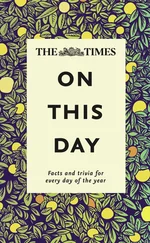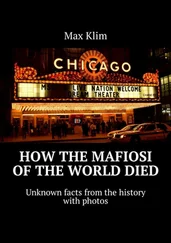[31]According to the Tibetan researcher Lugar Jam (conversation on July 2009) the names of the two Mongol monks sent by Jesuit cartographers to Tibet were Tsultrim Sangpo (churbizanbo) and Lhamo Tempa (lanbenzhanba).
[32]Hostetler, Laura. Qing Colonial Enterprise: Ethnography and Cartography in Early Modern China. Chicago: University of Chicago Press, 2001.
[33]For instance we have, from the biography of Milarepa, the story of Milarepa’s mother sewing seven pieces of gold in a traveller’s cloak, to secretly send to her son.
[34]Bertsch, Wolfgang. The Currency of Tibet . Dharamsala: Library of Tibetan Works & Archives, 2002.
[35]Bertsch, Wolfgang. A Study of Tibetan Paper Money: With a Critical Bibliography , Dharamsala: Library of Tibetan Works & Archives, 1997.
[36]Rhodes, N.G. “The First Coins Struck in Tibet ”. Tibet Journal . Winter 1990: (LTWA), Dharamsala.
[37]Richardson, Hugh. “Reflections on a Tibetan Passport”. High Peaks Pure Earth: Collected Writings on Tibetan History & Culture. London: Serindia Publications, 1998. pg 482.
[38]Das, Sarat Chandra, An Introduction the the Grammer of the Tibetan Language, Motilal Banarasidas, Delhi 1972. Appendix 1, pg 4-5. (Reproduction of the Lhasa and Shigatse passports issued to Purangir Gossain.)
[39]Bell, Charles. Portrait of a Dalai Lama: The Life and Times of the Great Thirteenth . Boston: Wisdom Publications, 1987. pg 278.
(Facsimile of 1st Everest passport; courtesy of Rinchen Dorjay who photographed it at the museum of the Himalayan Mountaineering Institute, Darjeeling.)
[40]Gould, B.J. The Jewel in the Lotus: Recollections of an Indian Political. London: Chatto & Windus, 1957. pg 210-211.
(Facsimile of Passport. Photograph of Rai Bahadur Norbu Thondup holding the passport.)
[41]Englehardt, Isrun. Tibet in 1938-39: Photographs from the Ernst Schafer Expedition to Tibet. Chicago: Serindia, 2007. pg 121. (Facsimile of Passport.)
[42]Tucci, Guiseppe. To Lhasa and Beyond . New Delhi: Oxford and IBH, 1983. pg 14-15. (Facsimile of passport.)
[43]Cox, Kennith. Frank Kingdon Ward’s, Riddle of the Tsangpo Gorges. United Kingdom: Antique Collector’s Club, 2001. pg 75.
[44]Tolstoy, Lt.Col. Ilia. “Across Tibet From India To China ”. The National Geographic Magazine . Washington, D.C.: National Geographic Society, August 1946. “This letter was a piece of red cotton cloth about 16 inches wide and two feet long, to be carried in the bosom or on a staff by an outrider who would precede the party by one or two days. It stated that two American officers were en route to visit the Dalai Lama…”
[45]Thomas, Lowell Jr. Out of This World: Across the Himalayas to Forbidden Tibet . New York: The Greystone Press, 1950. pg 79-80. (Facsimile of passport and photograph of Lowell Thomas receiving his passport at Yatung.)
[46]Bell, Charles. Portrait of a Dalai Lama: The Life and Times of the Great Thirteenth . Boston: Wisdom Publications, 1987. p 420. (Bell mentions that a passport was issued to Diwan Bahadur Phala who visited England in 1925.)
[47]Facsimile of Shakabpa passport, courtesy of Friends of Tibet, India.
[48]Richardson, Hugh. High Peaks Pure Earth: Collected Writings on Tibetan History & Culture. London: Serindia Publications, 1998. Plate 10. (Photograph of Treaty Pillar of AD 821-822 within protective enclosure.)
[49]Richardson, H.E. Tibet and Its History . London: Oxford University Press, 1962. 244-245
[50] The Sino-Indian Boundary Question (Enlarged Edition). Peking: Foreign Language Press,1962. Photostat of eastern sector of original map of the McMahon line with signatures and seals of Tibetan and British plenipotentiaries, Delhi 24 March 1914. Original scale 1:5000,000.
[51]Facsimile of the Tibet-Mongolia Treaty of 1913. Translation in
Richardson, H.E. Tibet and Its History . London: Oxford University Press, 1962. 265-267.
[52]Shakabpa, Tsepon W.D. Tibet:A Political History . Yale University Press, 1967. 227.
[53]Shakabpa, Tsepon W.D. Tibet:A Political History . Yale University Press, 1967. Frontispiece.
[54]Neushar, Thupten Tharpa. bhod shung tse yiktsang dang chegyal las khung . (The “Peak” Secretariate and the Foreign Bureau of the Tibetan Government). Oral History Series No: 5, Library of Tibetan Works & Archives, Dharamshala, 1998. Neushar states that the Foreign Bureau was set up during the Taktra Regency in the iron serpent year (1941). The office was located south-west of the Tsuglagkhang, and headed by Dsazak Surkhang (zurpa) Wangchen Tseten, and Ta Lama Kunchok Jungnas. Shakabpa in his History claims that the Foreign Bureau was created around 1913.
[55]On 23 March 1947 the Inter-Asian Relations Conference was convened in India to assess the status of Asia in the period following WWII. At this gathering, Tibet was represented as an independent nation, as evidenced by the country’s delineation on a conference map and the first appearance of the Tibetans’ national flag. The Chinese (Guomindang) were furious and protested formally to the organizers of the conference. The Tibetan flag was hoisted and also a flag emblem displayed before the delegates on the dias. Mahatma Gandhi addressed this conference. The representatives of the Tibetan foreign bureau, Theiji Sampo Tenzin Thondup, Khenchung Lobsang Wangyal and Kyibug Wangdue Norbu (translator) also took part in the Afro-Asian Conference held in Delhi in 1948. Interestingly, many of the participants were yet to be decolonized making Tibet one of the few established independent nations at this early pan-Asian gathering.
(Photograph of conference)
[56]Facsimile. Letter courtesy of the Amnye Machen Institute, Dharamshala.
[57]Tolstoy, Lt.Col. Ilia. “Across Tibet From India To China ”. The National Geographic Magazine . Washington, D.C.: National Geographic Society, August 1946.
[58]Harrer, Heinrich. Seven Years in Tibet . London: Rupert Hart Davis,1953.
Brauen, Martin. Peter Aufschnaiter’s Eight Years in Tibet . Bangkok: Orchid Press, 2002.
[59]Starks, Richard & Murcutt, Miriam. Lost in Tibet: The Untold Story of Give American Airmen, a Doomed Plane and the Will to Survive . The L:yons Press, Connecticut, 2004.
[60]Waterfall, Arnold C. The Postal History of Tibet . London: Robson Lowe Ltd., 1965.
[61]Photographs of letter to Mr.A.C.Rosslier of Newark, NJ, and various Tibetan stamps.
[62]Chapman, F. Spencer. Lhasa the Holy City. London: Chatto and Windus, 1940. pg 87.
[63]Cis, Peter. Tibet , Through the Red Box . New York: Francis Foster Books, 1998.
[64]King, W.H. “The Telegraph to Lhasa ”, The Geographical Journal , Vol.
[65](Jun., 1924). Pp 527-531. Published by: Blackwell Publishing on behalf of the Royal Geographical Society (with the Institute of British Geographers).
Group photograph of officials, engineers, crew and local laborers involved with the telegraph line. Sitting from left to right: Mr. Sonam Tsering of Kalimpong (sent on deputation by Indian Postal Dept.), first telegraph master of Lhasa. Mr. Ringang, Mr. W.H. King (chief engineer), Mr.W.P.Rosemeyer (assistant engineer), and Mr Kyibuk, official interpreter. The officials Kesura and Jorgay were also employed as supervisors, but are not in the photograph.
[66]In 1948, Radio Lhasa started the first of its daily broadcasts to the outside world. At five p.m., the station would go on air. The news was read in Tibetan, and then in English by Reginald Fox or by Kyibuk, one of the surviving Rugby students and an official at the Tibetan Foreign Bureau. Finally, the news was read in Chinese by Phuntsok Tashi Takla, the Dalai Lama’s brother-in-law. Official announcements were also read over the radio, as this one prepared by Aufschnaiter: “We have the honour to announce that Radio Lhasa will broadcast an announcement of the enthronement of His Holiness the Dalai Lama, the ruler of Tibet, together with a proclamation of the Tibetan government to the Tibetan people and the world, on Friday 17 November 1950, at 5.45 p.m. Indian Standard Time.” (Brauen, Martin. Peter Aufschnaiter’s Eight Years in Tibet . Bangkok: Orchid Press, 2002.)
Читать дальше


![Edzard Ernst - Trick or Treatment. The Undeniable Facts about Alternative Medicine [Electronic book text]](/books/151762/edzard-ernst-trick-or-treatment-the-undeniable-fa-thumb.webp)








